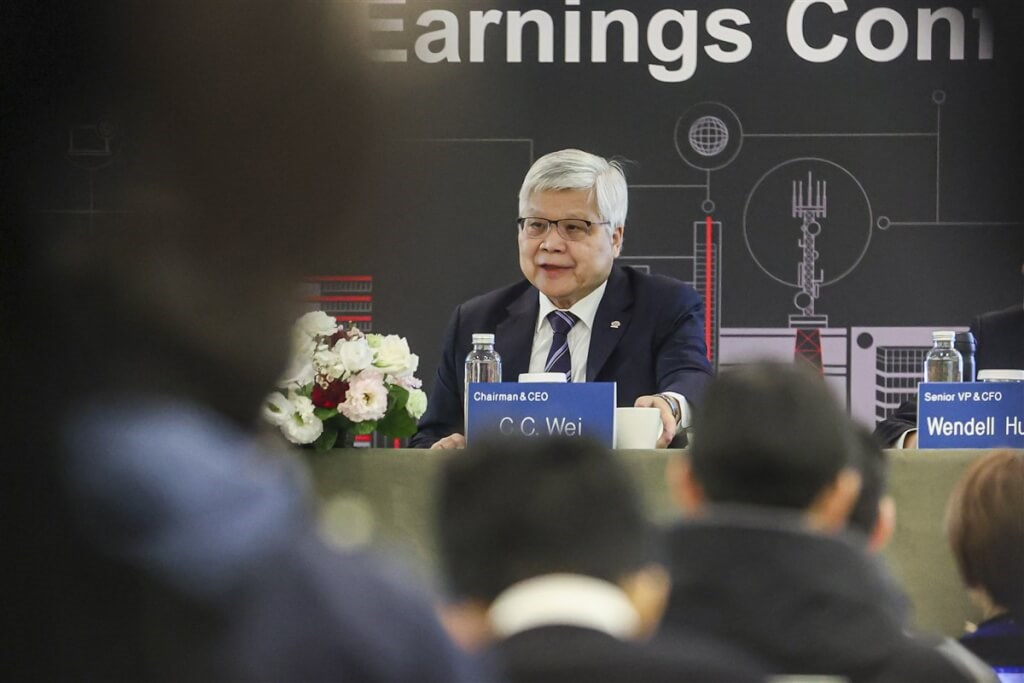Taipei, April 17 (CNA) Taiwan Semiconductor Manufacturing Co. (TSMC) said on Thursday the company has left its guidance for 2025 unchanged despite uncertainties posted by the Trump administration’s tariff policies.
At an investor conference, TSMC Chairman C.C. Wei (魏哲家) said while the U.S. tariff actions have created risks to the market, the chipmaker’s clients have not made any changes to their business ties with the company so it is still forecasting sales will grow 24-26 percent from a year earlier in 2025 in U.S. dollar terms.
On the back of growing popularity for emerging technologies including artificial intelligence applications, Wei said TSMC’s sales are expected to continue to beat the entire global pure wafer foundry business.
According to Wei, sales in the global pure wafer foundry business, including IC assembly and testing and photomasking, are expected to grow 10 percent in 2025.
However, TSMC will keep a close eye on possible changes in end-user demand in the market resulting from U.S. tariff policies, Wei said.
On April 2, U.S. President Donald Trump announced “reciprocal” tariffs on countries which have trade surpluses with Washington, including Taiwan, which has been slapped with a 32 percent tariff, while the White House announced a 90-day pause on the new measures last week, with a 10 percent duty to be applied instead to all countries except China.
In addition, Trump said on April 12 that his administration would be taking a look at semiconductors and the entire electronics supply chain as part of its National Security Tariff Investigations.
TSMC has benefited from strong global demand for AI devices, and expects sales of graphics processing units (GPUs) used in AI training and reasoning, application-specific integrated circuits (ASICs), high bandwidth memory (HBM) controllers and AI accelerators to double in 2025, Wei said.
With the growing demand for AI applications, TSMC is determined to meet the needs of its clients for 3D Chip-on-Wafer-on-Substrate (CoWoS) IC packaging services, expecting CoWoS production capacity to double this year and be entirely utilized, he added.
CoWoS demand and supply is excepted to stay healthy in 2026, Wei said.
Before the investor conference, TSMC released its first quarter results, posting record January-March net profit of NT$361.56 billion (US$11.11 billion), up 60.4 percent from a year earlier. However, first quarter net profit fell 3.5 percent from a quarter earlier due to traditional slow season effects.
Speaking at the investor conference, TSMC Chief Financial Officer Wendell Huang (黃仁昭) said the chipmaker expects to generate US$28.4 billion to US$29.2 billion in consolidated sales in the second quarter with the median figure likely to grow 13 percent from the first quarter.
The expected growth largely reflects strong demand for TSMC’s high end processes — 3 nanometer and 5nm processes — in the current AI boom, Wei said. The 3nm process is the latest technology TSMC has started commercial production.
However, due to higher production costs in the chipmaker’s overseas facilities, TSMC’s gross margin — the difference between revenue and cost of goods sold — will range from 57 percent to 59 percent, with the median figure likely to fall 0.8 percentage points from the first quarter, according to Huang.
The chipmaker’s first wafer fabs in the U.S. state of Arizona and Kumamoto, Japan started commercial production in 2024.
